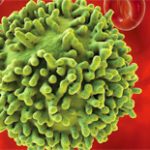Washington D.C.— Khaled Elsaid, PharmD, PhD, discussed synovial macrophages/monocytes and monosodium urate (MSU) crystal interactions at a Monday, Nov. 18, session of ACR Convergence, exploring potential new gout pharmacology targets via the lubricin/CD44/protein phosphatase 2A (PP2A) pathway.
Gout Treatment Approaches

Dr. Elsaid
Dr. Elsaid, an associate professor of pharmacology at Chapman University, Orange, Calif., first became interested in the lubricin/CD44/PP2A pathway during his earlier work on post-traumatic osteoarthritis, but more recently he has begun exploring possible applications to gout’s pathophysiology and targets for treatment development.1
Although the 21st century has witnessed considerable innovations in gout therapy, many patients still are not meeting their therapeutic goals. The burden of disease is increasing globally. Current treatment options for gout may be inadequate, especially as many patients have significant comorbid conditions, such as osteoarthritis, heart disease and kidney disease, and some cannot safely benefit from standard treatments (e.g., non-steroidal anti-inflammatory drugs) for a gout flare. Thus, new pharmacological approaches are still needed.
“Gout patients have a lot of comorbidities that share a common nature in terms of monocyte-driven inflammation,” explained Dr. Elsaid.
Hyperuricemia is key in gout’s pathogenesis because it can lead to the deposition of MSU crystals in the joints and soft tissues. There, macrophages/monocytes phagocytose the crystals, activating the NFκB inflammatory pathways and NOD-like receptor protein 3 (NLRP3) inflammasomes. These inflammasomes activate caspases, leading to an inflammatory cascade and release of cytokines, including activation and release of interleukin (IL) 1β. Binding to endothelial IL-1β receptors leads to further inflammatory mediator release, neutrophil recruitment and consequent symptoms of gout flare.1,2
Thus, therapies that lower uric acid are critical for gout management (e.g., xanthine oxidase inhibitors to lower uric acid production; newer uricosuric drugs, such as lesinurad, which inhibit urate absorption; and uricolytic-like pegloticase, which converts uric acid to a more easily excreted form). The inflammatory response has also been an important target, from older drugs, such as corticosteroids or colchicine, to newer drugs that neutralize IL-1β, such as anakinra, as well as experimental drugs that inhibit the NLRP3 inflammasome, such as dapansutrile.3
“None of these therapeutics tried to address the critical step of how the macrophages recognize the MSU crystals and engulf them in order to release IL-1,” said Dr. Elsaid. He and his team wanted to take a different approach, instead focusing on this macrophage level.
Lubricin/CD44/PP2A Axis and Synovial Homeostasis
Lubricin, also known as proteoglycan-4 or PRG4, is a mucinous glycoprotein produced by synovial fibroblasts and superficial zone chondrocytes. Along with hyaluronic acid, it is one of the two major components of synovial fluid. Known for its lubricant proteins, it also plays a role in controlling the synovial response to injury.
